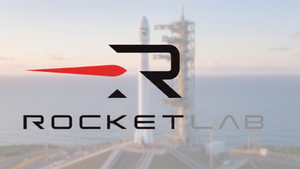
Transparency in science can help bring scientific truth to light for the benefit of humanity, saving billions in taxpayer money and countless lives from premature cancer deaths
DALLAS, TX, June 22, 2025 /24-7PressRelease/ -- I, Dario Crosetto, an Italian-American scientist, am facing the suppression of transparency by the scientific establishment. After reviewing the irrefutable facts and evidence I present here, I invite you to let your conscience and intellect guide your decision: does this cause warrant your support?
Transparency in science can help bring scientific truth to light for the benefit of humanity, saving billions in taxpayer money and countless lives from premature cancer deaths, through a public, face-to-face comparison of my inventions with my colleagues' alternative approaches.
My goal is to inform enough people so that I may be provided with the necessary resources to experimentally prove the effectiveness of my invention: the 3D-CBS (3D Complete Body Screening), an advanced PET/CT that can potentially halve premature mortality and healthcare costs through cost-effective early cancer detection followed by prompt existing treatment.
Because PET/CT operates by detecting specific pairs of photons from radiation, the basis of my invention is directly related to my earlier 3D-Flow invention in particle physics. This technology was officially recognized as a breakthrough by an international review panel at Fermilab in 1993 (https://bit.ly/3FJaPob), capable of accurately detecting objects (including various particles and photons) traveling up to the speed of light.
Now you can understand why I am asking taxpayers, Members of the European Parliament, and Congressmen in the U.S. to issue a Parliamentary Question. This question would seek to hold CERN's scientists accountable for implementing transparency through a public, face-to-face meeting. This meeting between CERN's designers of the FPGA system under construction for 2026-2036 experiments, and myself would compare openly and transparently CERN FPGA 20 trillion transistors, consuming 650 kW, limited to 66 operations (add, subtract, multiply, etc.), with my 3D-Flow system consuming 6 kW, capable of executing over 8,000 programmable operations on each dataset arriving every 25 nanoseconds, at a fraction of the cost, meeting the requirements for CERN's experiments through 2042.
Responsibility for addressing and resolving this issue transparently lies with CERN, the world's leading research center in this domain, which receives over $1 billion annually in taxpayer funding (primarily from Europe, followed by the United States and other nations). For example, annual contributions include €258 million from Germany, €185 million from France, €164 million from the UK, and €120 million from Italy. The original agreement with CERN involved a $531 million U.S. contribution to the LHC infrastructure. Additionally, the U.S. Department of Energy (DOE) contributed $250 million, and the National Science Foundation (NSF) $81 million to ATLAS and CMS experiments. Each year, U.S. taxpayers continue to fund hundreds of millions of dollars in hardware, computing, and personnel costs for CERN activities. Many projects presented each year at IEEE-NSS-MIC-RTSD conferences are funded by Horizon Europe, which is spending €95.5 billion between 2021 and 2027.
Therefore, in order to benefit from a breakthrough in medical imaging capable of saving countless lives, it is essential to address the billion-dollar expenditures at CERN. The institution holds a central role in bringing scientific truth to light—whether in particle discovery, cost-effective medical imaging devices or providing defense applications to shield against weapon attacks. All of these are achievable with my 3D-Flow invention (see details about "The 3D-Flow Processor and System Architecture Break the Speed Barrier in Real-Time Pattern Recognition from an Ultra-High Data Stream" on pages 35-38 of https://bit.ly/4e1uURA), which can accurately detect objects traveling up to the speed of light—something the CERN FPGA system cannot achieve, even with 100 trillion transistors.
________________________________________
Irrefutable Facts and Evidence
1993: My 3D-Flow invention, enabling the accurate detection of objects (particles, tumor markers) traveling at light speed, was recognized as a breakthrough by a major international public scientific review panel at FERMILAB (https://bit.ly/3FJaPob). I received initial funding and a subsequent $1 million grant from the DOE for a feasibility study, which was successfully demonstrated in a NIM article (https://bit.ly/3tKd9Fl).
1999: With the $1 million grant, I demonstrated the feasibility of implementing a 3D-Flow Level-1 Trigger system that could meet the requirements of all CERN experiments through the 2026 LHC upgrade. I wrote a detailed design, approved by peer-review and published in a 45-page NIM article (https://bit.ly/3tKd9Fl). Despite this, the DOE directed over $50 million to a single U.S. researcher, which attracted over one hundred million dollars to build the CERN -FPGA-based system for the CMS experiment, ultimately scrapped in 2016 due to inadequacy.
2000: I invented the 3D-CBS system described in my 220-page book (https://bit.ly/45U2Wqv), 200 copies of which I distributed free of charge to colleagues at the IEEE-NSS-MIC conference in Lyon, France. Instead of providing me with funding to build it, three U.S. universities copied my idea, even using words from the cover of my book in their Abstract to obtain a $15.5 million grant from NIH in 2015. However, because they did not know how to build it, they gave the money to a Chinese company to copy my invention. This copy, named EXPLORER, is mainly targeted for research and developing new drugs, which increases the commercial cancer business. The EXPLORER is less efficient and costs more than six times the 3D-CBS device, which is instead designed for a cost-effective early cancer detection.
2003: I proved the functionality in hardware of my 3D-Flow invention when I built, at my own expense, a 3D-Flow system with 144 processors in hardware circuits which I presented at the IEEE-NSS-MIC-RTSD conference in Portland, Oregon (https://bit.ly/43Rlk0s). Despite proving 3D-Flow's functionality in hardware circuits and submitting requests for funding in the U.S. and Europe, I received no funding from their annual $2 trillion budget for research and development to build a complete 3D-Flow system for CERN experiments and a 3D-Flow system for the 3D-CBS device to prove experimentally that it can halve the mortality rate.
2015: I was invited by the Director of DOE High Energy Physics, who managed $1 billion per year and was my former supervisor at the Superconducting Super Collider, to submit a proposal for a universal Level-1 Trigger system meeting the requirements of all LHC experiments at CERN. I submitted a detailed 274-page proposal, supported by 59 quotes from reputable industries (https://bit.ly/4mT9yvk). This proposal detailed the construction and cost to build one 3D-Flow system meeting the requirements of all CERN Level-1 Triggers, and one 3D-Flow system for the 3D-CBS medical imaging. Funding was again provided to CERN to build their multiple FPGA Level-1 triggers that were later dismissed as inadequate.
2018: The European Union allocated €17 million to the CERN-ATTRACT Consortium to fund innovative projects. I submitted a request to fund the 3D-CBS, proven with simulation to be cost-effective for cancer screening, but it was rejected. The CERN-ATTRACT Consortium instead funded the WPET (wearable PET), an absurdly impractical coat weighing over 350 kg, intended to be worn for 24 hours for cancer screening (http://bit.ly/2JWsxG2, https://bit.ly/3iydDp3).
2021: A Member of the European Parliament, Alessandro Panza, submitted a Parliamentary Question (https://bit.ly/3HKjreL) demanding accountability from CERN-ATTRACT for funding the impractical, inconsistent WPET project and rejecting the scientifically sound 3D-CBS.
2022: Rather than asking CERN to organize a public meeting between myself and the authors of WPET to compare the scientific merits of our respective projects, the European Union allocated an additional €28 million to the CERN-ATTRACT Consortium (https://cerneu.web.cern.ch/attract-unveils-projects-will-benefit-its-eu28-million-fund-innovation).
2023: No Academy of Sciences or scientific institution—including the highly esteemed Pontifical Academy of Sciences, which counts 86 Nobel Laureates among its current and past members (including former Director of the U.S. National Institutes of Health, Prof. Francis Collins and current CERN Director General Prof. Fabiola Gianotti)—has been able to technically refute my findings. My 63-page report (https://bit.ly/3qii6Dv), submitted two years earlier and included in the agenda of the Academy's Council meeting on 20 September 2023, still awaits a single technical rebuttal.
2024: All six of my scientific papers were accepted by the prestigious 2024 IEEE-NSS-MIC-RTSD conference, where I was given two hours to present 102 slides. Among the 1,300 attending scientists, none refuted my calculations, claims, or system design—either during the conference or afterward. IEEE published the slides and full two-hour video presentation on its official website, and I continued to make the material publicly available. To date, no one from any prestigious scientific body globally has refuted or invalidated any of my claims.
2025: I authored an 82-page scientific article (https://bit.ly/4e1uURA) to expand upon and support the presentation in greater detail, including a summary table on page 11 comparing my 3D-Flow-based Level-1 Trigger with CERN's FPGA-based system. To simplify access for those unable to read the full document, I also created two concise, 2-page summaries (https://bit.ly/4jMdpbD; https://bit.ly/3YF8Oj8), each featuring 2,000-character abstracts, and drafted a 200-word Parliamentary Question on page 4 of (https://bit.ly/4mQ9PiL). All are written to be accessible and quickly understandable, with links to additional material for those seeking deeper insight.
2026–2036: Supported by three levels of solid evidence—conceptual analysis, calculations, simulations, observations of natural laws, and experimental results, all thoroughly detailed in the 82-page scientific article—I demonstrated (see page 11, Table I of https://bit.ly/4e1uURA) how over $4 billion in taxpayer funds have been wasted for decades. This evidence further reveals why the new CERN FPGA-Based Level-1 Triggers, currently under construction for the 2026–2036 period, featuring a 20-trillion-transistor, 650 kW system, are fundamentally flawed and destined to fail. Immediate action is required to stop these projects set to waste several more billions of euros over the next decade.
1. Conceptual Flaw:
A deep dive into the FPGA architecture (see Table IV on page 27, Table VI on page 48, Figures 38, 39, 40 and Tables VII, VIII on page 49 of https://bit.ly/4e1uURA) reveals it simply is not designed to handle the massive data flow at CERN. FPGAs are excellent devices for other applications but are unsuitable for CERN Level-1, or for High Level Triggers. FPGA architecture is physically and technically incapable of enabling experimental physicists to perform between 1,000 and 8,000 programmable operations (such as addition, subtraction, multiplication, etc.) on each dataset arriving every 25 nanoseconds—without losing data. This core limitation renders it unsuitable for its intended purpose.
2. Simulation Proof:
Had CERN's designers used the official simulation tools provided by Xilinx (the manufacturer) for their 650 kW FPGA system (under construction for 2026–2036), they would have immediately seen that the system cannot meet the required performance criteria. The evidence was there, but was ignored.
3. Historical Failure:
This isn't new. For the past 30 years, CERN's FPGA-based Level-1 Trigger systems for the ATLAS and CMS experiments have repeatedly failed, were discarded and then replaced by similar flawed designs. If CERN scientists had taken these failures seriously, they could have avoided repeating the same mistake—wasting public funds on FPGA systems with the same architectural flaw. The recurring need to scrap and redesign these triggers clearly signals a systemic issue that has yet to be addressed.
What Is a Level-1 Trigger and Why Does Its Inefficiency Waste Billions?
The current CERN Large Hadron Collider (LHC) creates around 1.2 billion "events" per second. The upcoming High Luminosity LHC (HL-LHC) upgrade, starting around 2026, will explode that to 8 billion events per second.
If we tried to save all that raw data, it would fill every hard drive on the planet in a single day. To avoid this, a Level-1 Trigger system is used to analyze and filter the incoming data in real time, keeping only the most promising events and discarding more than 99% of the rest. However, once discarded, the data is lost forever.
But here's the critical problem: If the filtering algorithm is too simple (only able to perform, for example, 66 operations instead of thousands), it throws away good data along with the bad. All the billions of euros spent building the LHC accelerator, and the invaluable time and salaries of thousands of scientists, are then wasted analyzing what is essentially "garbage data"—data that contains no truly significant discoveries.
This is not hypothetical; this has happened for decades. When the Higgs boson-like particle was announced in 2012, out of 1,000 trillion events generated by LHC, statistically containing a million Higgs boson events, only 40 were announced. Those 40 were likely recorded by chance, not effectively identified by the Level-1 Trigger, which was later decommissioned in 2016 for being ineffective. Yet, it was replaced by other FPGA-Based Trigger systems that also failed. Now, for the future HL-LHC (2026-2036), CERN is building yet another colossal FPGA-based Level-1 Trigger system—like the monster CMS (https://cds.cern.ch/record/2759072/files/CMS-TDR-022.pdf) with 20 trillion transistors and consuming 650 kW of power, guaranteed to fail again for the same architectural reasons—it still allows only 66 operations per dataset.
________________________________________
A Proven Solution: The 3D-Flow Architecture
The over $4 billion wasted could have been saved. My 3D-Flow design and project, which was peer-reviewed and approved in a 45-page article back in 1999 (https://bit.ly/3tKd9Fl), offered a viable alternative. If it had been funded and implemented with 120 nm CMOS technology, it could have performed over 400 programmable operations per event, efficiently filtering the 1.2 billion events per second needed by the LHC until 2026. A single 3D-Flow implementation could have served all experiments, eliminating the need for the repeated, failed redesigns of multiple FPGA-Based Triggers.
Today, the technology-independent 3D-Flow architecture, built with 20 nm CMOS technology, is even more powerful. It can meet the demanding HL-LHC requirements of 8 billion events per second for all Level-1 triggers across all CERN experiments until 2042. It achieves this by its capability to execute over 8,000 programmable operations on each dataset arriving every 25 nanoseconds, with no data loss. This efficient 3D-Flow system consumes only 6 kW of power, a stark contrast to CERN's proposed 650 kW FPGA-based system. My 82-page scientific article details this system on pages 74-76 of (https://bit.ly/4e1uURA), with a 2-page comparison (https://bit.ly/4jMdpbD) to the CERN-FPGA-Based system, and detailed in another 2-page scalable, universal implementation (https://bit.ly/3YF8Oj8).
________________________________________
Beyond Physics: Saving Lives and Taxpayer Money
The benefits of 3D-Flow extend far beyond particle physics: Its broader applications, particularly in medical imaging, offer the potential for accurate and cost-effective detection of tumor markers. This innovation has the power to save countless lives through early cancer detection and lead to global reductions in healthcare costs.
________________________________________
The Call for Transparency and Accountability: Urgent Need for a Public Scientific Review
None of these profound benefits can become reality unless a public scientific meeting is organized, where I, alongside CERN's FPGA designers, can each present our respective technical evidence for open review. This is where experts at CERN and from around the world connected via Zoom, can openly evaluate the evidence, claims, and performance of each approach in a transparent forum.
By denying such a public comparison—one that could reveal the scientific truth before billions of euros are wasted—it will be difficult for taxpayers in the future to understand why politicians, institutional leaders, or public officials might choose to shield CERN's FPGA designers from accountability.
I am not asking for automatic acceptance, but for a fair and transparent scientific comparison—where evidence, not authority, determines what best serves science and humanity.
It is not my intention to defame anyone but rather to protect everyone from inconsistencies that harm us all. I aim to do this by providing facts, documents, scientific evidence, and calculations—rooted in irrefutable mathematical principles—which are not only legitimate but essential in defending the public from deception and harm. These will reveal the truth, with the aim of uniting all those who believe in science, the Rule of Law, and mutual respect.
I have been doing this for three decades with patience, prudence, and great respect for all people involved in the inconsistencies. I have shared a draft of my findings—detailing major inconsistencies—with the parties involved, requesting that they identify any illegitimate, non-scientific, or unlawful language that should be removed before making the documents public.
Over the past three years, out of respect for those involved, I have sent draft letters and documents—ranging from two to sixty pages—to scientists, Academies of Sciences, and government representatives, including the President of Italy. This includes raising concerns about a cancer organization that, for 25 years, claimed to use millions of euros collected from Italians (including from the 150,000 participants at the 12 May 2024 event in Rome, presided over by the President) to reduce cancer deaths. However, official data showed that cancer mortality among Italian women increased during this time, despite a declining population.
________________________________________
My efforts have not only aimed to serve and protect the public interest but also to protect the reputation of public officials, by alerting them to potential scientific and economic inconsistencies they may have unknowingly endorsed.
After sending a two-page draft to the President of Italy and all relevant parties—including the leader of the cancer organization responsible for these inconsistencies—requesting a meeting to resolve the issue and inviting any corrections or objections to my wording, I then distributed the letter publicly. I continued to keep the President informed with a more complete 60-page report (PDF https://bit.ly/3wMUBpH; HTML: https://bit.ly/3VAuCde) and followed up with several two-page letters (https://bit.ly/3HPw6gv), all shared with the involved parties before public release. For the first time, the President withdrew his endorsement of the 11 May 2025 fundraising event in Rome. All related material and data are now in the hands of the Italian judicial system to determine whether any violations of the law occurred.
I have shown the same respect to fellow scientists by consistently inviting dialogue to address scientific inconsistencies and share my documents before public dissemination. For example, out of respect and gratitude toward all Chairs of the 2024 IEEE-NSS-MIC-RTSD Conference—who supported scientific transparency and accepted all six of my articles for presentation—I shared my slides with them ahead of my talk, inviting feedback on any illegitimate, non-scientific or non-compliant content. The General Chair thanked me for this gesture while confirming that early submission of the slides was not required.
The goal of a public scientific meeting between myself and CERN's FPGA designers is to cooperatively address the inconsistencies that harm us all—not to ignore or suppress them, but to take responsibility, acknowledge the evidence, and work toward resolution through logic, mutual respect, adherence to scientific principles, and commitment to the rule of law.
Let us cooperate to resolve inconsistencies. The time has come to uphold scientific integrity, act on validated innovation, and ensure that research and development funds truly serve the public good.
________________________________________
What do I stand to gain from this transparency?
The Academies of Sciences have spent or endorsed spending over $30 trillion in research and development since my invention of the 3D-CBS in the year 2000. If scientific truth is allowed to emerge—if my colleagues and scientists of all Academies of Sciences, including the prestigious Pontifical Academy of Sciences, endorse my invention and provide me with just 0.00000067 of that sum ($20 million) to build two 3D-CBS devices to test my invention experimentally—my greatest gain would be the fulfillment of my lifelong goal: that my inventions can save billions of Euros for taxpayers at CERN, accelerate advancement in science, and, most crucially, experimentally demonstrate with two 3D-CBS devices how to halve premature cancer deaths and costs in a defined territory, thereby truly contributing to a better world and improved well-being for future generations.
The percentage reduction in cancer deaths within the defined territory, relative to the total population shown in the table, will serve to confirm the data presented in the ROADMAP table https://bit.ly/3AJtcqp. (See video at: https://www.youtube.com/watch?v=HwMnHRuWo4o).
________________________________________
What do you stand to gain?
By donating—online or via Zelle to donate@crosettofoundation.org—you can play a direct role in saving lives and transforming the future of cancer detection. Your support will help prevent the waste of billions in taxpayer funds and ensure that vital research dollars are invested in scientific breakthroughs that truly benefit humanity. The innovative 3D-CBS device offers hope not just for you and your loved ones, but for generations to come, by dramatically reducing the risk of premature death from cancer. With your help, we can move closer to halving the devastating global toll of over 10 million cancer deaths each year. Your contribution is not just a donation—it is an investment in a healthier, brighter future for all.
Please share these irrefutable facts and evidence with your friends and networks. You may also like to read and share the links to press releases in both English and Italian (https://bit.ly/4mQ9PiL, https://bit.ly/4kU8vJI), along with links to over ten different press releases published across more than 500 outlets (https://bit.ly/4e6wiEg). This will help raise awareness and reach decision-makers who may otherwise remain uninformed.
________________________________________
I hope that the facts and evidence presented above will guide you to make the decision to support this cause with a tax-deductible donation of any amount, at: https://crosettofoundation.org/donate-now/ or via Zelle at donate@crosettofoundation.org. I would be most grateful.
Thank you very much,
Dario Crosetto
President of the Crosetto Foundation for the Reduction of Cancer Deaths
DeSoto, Texas – USA
The Crosetto Foundation for the Reduction of Cancer Deaths, a U.S. 501(c)(3) nonprofit, is committed to saving lives through innovation and integrity in science. The Crosetto Foundation has been awarded the Gold Seal for Transparency for eight consecutive years from GuideStar: https://www.guidestar.org/profile/03-0544575.
Donate here https://crosettofoundation.org/donate-now/ Or Zelle at: donate@crosettofoundation.org
---
Press release service and press release distribution provided by https://www.24-7pressrelease.com





